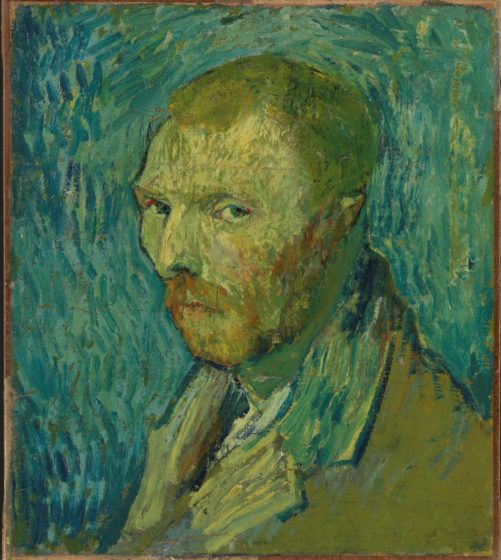The madness of Van Gogh: pivotal self-portrait confirmed


His eyes, rimmed with red, stare sideways from a guilty face in the only self-portrait experts believe Van Gogh painted in his madness.
The Van Gogh Museum in Amsterdam on Monday announced new research confirming that an unusual painting now joins the Dutch artist’s official body of work.
Self-Portrait, 1889, owned by Oslo’s National Museum, is thought to be the only painting Vincent Van Gogh created while suffering from his first period of psychosis, in the St-Rémy asylum in France. Less than a year later, he would shoot himself and die.
The portrait was bought by the Norwegian museum in 1910 as a genuine Van Gogh but since the publication of an important catalogue in 1970s, experts have doubted the work’s provenance, style, use of colour and place of execution. Now, after six years of extensive technical and stylistic research, the work has been confirmed as a pivotal painting in Van Gogh’s last intense months.
Twilight world
Louis van Tilborgh, senior researcher at the Van Gogh Museum, described the work as ‘remarkable and even therapeutic’, saying that differences in its style and colour depicted the artist confronting his own madness. ‘Here you see a patient, forcing himself to understand he is sick, choosing to confront himself with himself,’ he said at a press conference in Amsterdam.
‘There’s a contract between the pastel-rich background and the face, which seems less lifelike, and we think this was Van Gogh’s goal. He expresses his disturbance in a visual language…as a patient living in the twilight world.’
Research to be published next month in The Burlington Magazine describes how three researchers X-rayed and analysed the painting. They discovered a reference to it in a letter the artist wrote to his brother Theo on 20th September 1889, as ‘an attempt from when I was ill.’
They also matched its colour palette to other paintings from the time, and its style to typical depictions of those in deep depression. ‘Patients experiencing a psychotic episode live in a twilight world, often accompanied by fear, which was exacerbated in Van Gogh’s case by acute depression, religious mania and delusions of guilt,’ write Van Tilborgh, Teio Meedendorp and Kathrin Pilz in the article. ‘They shut themselves off from the outside world, avoid eye contact and resort to side-long glances…
‘This is precisely how Van Gogh depicted himself. His head is bent slightly and his body turned away from the mirror, that unavoidable aid for every self-portrait, with the irises set deep in the corners of his eyes…The self-portrait seems to document his struggle to survive as a patient.’
Heart-breaking
Mai Britt Guleng, curator of modern art and old masters at Oslo’s National Museum, said that they were extremely happy the work had been confirmed as a Van Gogh painting, placing it in a tradition of work made in France that deeply influenced Norwegian painters. ‘It sits very well with the story of self-understanding in Norwegian art – this breaking of the rules, to show real emotions,’ she said. ‘Jens Thiis [the museum director who bought it] appreciated its unfinished qualities and referred to its emotive qualities. He found the self-portrait heart-breaking.’
Experts would not estimate the value of the work – which cannot, in any case be sold – but it joins a scarce number of Van Gogh self-portraits. ‘It all adds to the story,’ said Adriaan Dönszelmann, acting general director of the Van Gogh Museum, to DutchNews.nl. ‘I wouldn’t dare to guess the value, but the total number of self-portraits is limited to 18 and they play a very specific role as you can see so well how he was.’
He added that it would be on display with other portraits as part of an In the Picture exhibition from next month ‘which directly links to the selfie culture of today’.
Thank you for donating to DutchNews.nl.
We could not provide the Dutch News service, and keep it free of charge, without the generous support of our readers. Your donations allow us to report on issues you tell us matter, and provide you with a summary of the most important Dutch news each day.
Make a donation